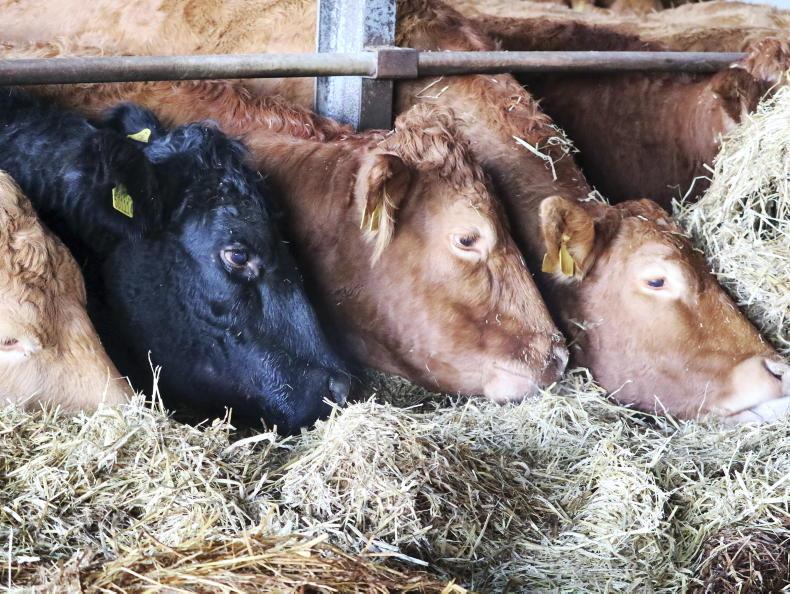Farmers walk in and out of cattle sheds multiple times per day during the winter housing period.
But when standing in the shed, how many farmers look around to see what the surrounding environment and animal behaviour is telling them?
Taking a fresh look at the cattle shed, or asking a farm adviser or vet to run their eyes over housing facilities, will highlight the underlying health challenges.
While it is too late to make major shed alterations once cattle are indoors, it may be possible to make a few minor tweaks here and there.
Fresh air is the best antibiotic for cattle.
A constant supply is crucial for healthy animals after housing.
Well-ventilated sheds kill bacteria and viruses around 20 times faster compared to housing lacking fresh air.
When entering sheds, pay attention to your surroundings. A strong ammonia smell, damp or humid conditions and excessively dirty cattle are all signs of poor airflow.
There will also be accumulations of cobwebs and moisture staining on roof timbers and roof sheeting. Airflow is governed by the inlets along sidewalls and outlet along the ridge of the roof apex. The wider the shed, the larger the outlet needed to release stale air.
Be careful not to introduce draughts into sheds, particularly those with young calves. A telltale sign if a draught is present is calves tend to lie along perimeter walls to stay warm.
Air intakes in a calf creep should be set at least 6ft above ground level, allowing fresh air to pass over calves without causing a draught.
A lack of natural UV light inside sheds encourages parasites such as lice and ringworm to thrive.
Bugs love dark, humid conditions to multiply, so the more light and fresh air entering a shed, the better.
To increase light entering the shed, replacing a few tin sheets on the side walls with clear plastic perspex, wire mesh panels or timber space boards can be beneficial.
Opting for a few wire mesh panels, or space boards will also increase airflow in sheets. Don’t overdo it though, as you can quickly introduce draughts to the shed.
Pay attention to lying patterns in cattle.
There should be periods every day when all animals are lying comfortably at the same time.
If this is rarely or never seen, then cattle are overstocked. Weight gain in stores will be greatly compromised. There is also an increased risk of an animal being injured through trampling.
Feed barriers are also something to pay attention to, especially if cattle pens are housing a different group of animals this winter.
For example, in sheds normally used for strong weanlings, but currently used for replacement heifers, thin cows or finishing cattle, do horizontal feed rails need to be raised to allow animals access silage?
Wet bedding lowers core body temperatures and in the case of young calves, these animals have to burn more energy to stay warm.
This means the diet is supplying less energy for weight gain and calves can quickly become immunosuppressed, increasing the chance of these animals developing pneumonia.
Ask yourself why bedding is becoming overly wet in a short period?
Is it down to factors such poor drainage on level floors, not enough straw being applied in the first place, or feeding silage has a low dry matter, but high digestibility.
Sloped floors and using woodchip below will increase the soakage of urine in calf creeps, helping to reduce the rate of soiling.
Feeding a high dry matter silage is also recommended.
Water troughs should be cleaned out regularly to remove faeces and spoiled silage.
Cattle on a high dry matter diet, and cows suckling a calf, need plenty of fresh water daily.
If you wouldn’t drink the water yourself, don’t expect cows to drink it and perform to their potential.
